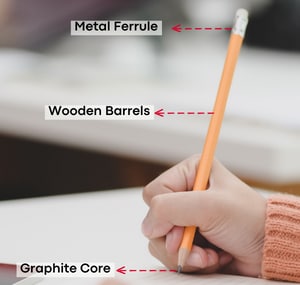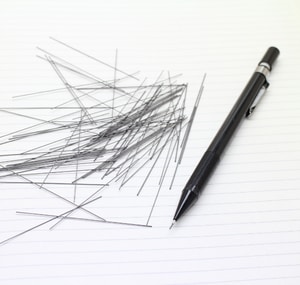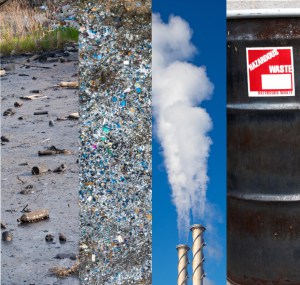
Pencils, popular tools for many people, seem simple to dispose of. Are pencils recyclable? Yes, but they can just be recycled to some extent. Knowing how to dispose of waste pencils and recycle them properly is a challenge.
Dive in to examine the recycling process of pencils, factors that affect their reusability, and explore other solutions for a sustainable approach to pencil recycling.
Table of Contents
Are Pencils Recyclable?

Pencils can be recyclable, but not entirely. Recycling pencils depends on the materials used in their production.
- Wooden pencils, which comprise most of a pencil, are made from trees like cedar and undergo various chemical treatments to enhance their durability and smoothness.
These treatments render the wood non-recyclable, making it challenging to recycle wooden pencils effectively. Thus, they are usually not accepted in recycling bins.
- On the other hand, the ferrule, a metal piece that keeps the eraser in place, is the most recyclable part of a pencil. Ferrules can be made from metals like brass or aluminum, easily recycled in large amounts.
Recycling Process for Different Pencil Components
1. For different pencil components

- Wooden Barrels
Can wooden pencils be recycled? Yes, you can use traditional paper recycling techniques as long as the pencils are made from recycled wood. It involves shredding the wood into tiny pieces and turning it into pulp to make new paper items.
However, some woods go through treatments or contain other materials that make them non-recyclable. Thus, you should check before recycling.
- Graphite Core
To recycle a graphite core, break the pencils into several pieces and put them in a cup of water. When mixing them, the graphite will sink to the bottom of the cup, and the wood will float to the surface.
Finally, you can then separate the graphite, dry it, and reuse it for making new pencils or other graphite-based products.
- Metal Ferrule
You can recycle the metal ferrule by placing the pencil in a recycling bin designated for metal or aluminum products.
During the recycling process, the metal will melt and be used to produce new metal items.
2. For different types

Step 1: Check the materials
Ensure that the wood pencils you have are made from all-natural materials. The wood used in the pencils should be raw and uncoated. Avoid pencils with synthetic or composite materials.
Step 2: Separate non-recyclable components
Before recycling, remove any non-wood components from the pencils, such as erasers or metal ferrules.
Step 3: Shred woods
The pencils can be shredded into small pieces, either manually or using a shredder. This process breaks down the wood into smaller fragments, making it easier to handle during recycling.
Step 4: Produce pulp
The shredded wood pieces are processed further to create pulp. It involves mixing the wood with water and breaking it into a fiber-rich slurry. The slurry is then refined and cleaned to remove impurities.
Step 5: Create new products
The wood pulp can be used to produce mulch, which is commonly used in gardening and landscaping. The wood pulp can be an ingredient for recycled paper, particle board, or other wood-based products.

Plastic pencils can be recycled if they are made of high-density polyethylene (HDPE). It is a recyclable plastic used in various products, including plastic pencils. Recycling HDPE plastic pencils involves the following steps:
Step 1: Collecting and sorting
Separate them from other non-recyclable components, such as rubbers or metal attachments.
Step 2: Shredding and washing
The plastic pencils are shredded into small pieces, which helps with later processing. These pieces will be washed to remove any dirt, debris, or contaminants.
Step 3: Melting and extrusion
The cleaned HDPE plastic pieces are melted and formed into uniform pellets or granules.
Step 4: Repurposing
The resulting pellets or granules can create new products, such as pipes, vinyl products, trash cans, furniture, toys, bottles, and more.

Step 1: Consult your local recycling center
The recycling center can provide specific instructions for recycling metal pencils. They also inform you about any additional requirements or restrictions.
Step 2: Remove other components
Before recycling, remove the eraser and ferrule from the metal pencils. These components may not be made from recyclable materials or will be recycled separately.
Step 3: Extract graphite
Take out the graphite core from the metal pencils. Graphite is not recyclable in the same way as metal, so it is separated for proper disposal.
The Challenges and Limitations
1. The environmental impact of pencil waste

- Water pollutants: Plastic pencils may contaminate the water with substances like biochemical oxygen demand and suspended solids.
- Solid waste: Plastic pencils generate more waste during production, resulting in higher post-consumer waste.
- Air emissions: Wood pencils emit 5 to 6 times more carbon monoxide than plastic pencils.
- Hazardous waste: Plastic pencils tend to generate more dangerous waste. It means they pose a high risk of containing or releasing harmful substances into the environment.
2. Current pencil recycling options and programs

If you don’t know where to donate used pens and pencils, you can consider BIC. This organization has partnered with TerraCycle to offer a recycling program for writing utensils.
- Consumers can participate by collecting any brand’s used pens, pencils, highlighters, markers, and mechanical pencils.
- They can then print off a shipping label from the program’s website or request a prepaid shipping label.
- Once received, the products are sorted by material type and sent for recycling into new products. Additionally, each shipment contributes to a charitable organization.
Alternatives to Recycling

- Reuse: Instead of throwing a pencil, you can sharpen or use them until completely worn down. It helps maximize their lifespan and reduce the need for disposal.
- Donate: You can donate pencils to schools, organizations, or individuals in need.
- Repurpose: If you don’t know what to do with old wooden pencils, get creative and find new uses. For example, you can use them as plant markers in your garden, create artwork or crafts, or repurpose them into unique and functional items like pen holders or decorations.
- Share or swap: If you have a surplus of pencils, consider sharing or swapping them with friends, family, or colleagues. This can help reduce waste and ensure that the pencils are used properly.
- Consider using eco-friendly alternatives to traditional pencils: compostable pens, mechanical, biodegradable pencils, or pencils made from recycled materials.
Frequently Asked Questions

How Many Pencils Are In The World?
A fact about pencils is that there are around 42,400,000 billion pencils worldwide. Factors such as manufacturing rates, consumption patterns, and stockpiles can influence the number of pencils in existence at any given time.
Are Pencil Shavings Compostable?
Yes, you can compost pencil shavings. They are made of wood, which is organic and can break down in a compost pile. Pencil shavings add carbon to the compost and help create nutrient-rich soil for your garden. Just mix them with other compostable materials and follow local composting guidelines.
How Many Pencils Are Made Each Year?
The global production of pencils varies yearly, but it is estimated that around 14 billion pencils are made each year. Note that this is a rough estimate, and the actual number may fluctuate based on factors such as market demand and manufacturing trends.
Conclusion
Are pencils recyclable? Yes, but the process and recycling options may vary depending on the specific type of pencil.
Traditional wooden, mechanical, plastic, or colored pencils are often recyclable through certain recycling programs or can be repurposed for other uses.
You should check with local recycling facilities or waste management guidelines to determine the best approach for recycling pencils in your area.
Remember that reusing or repurposing pencils can also be a sustainable option to reduce waste.

Art has always been a part of my life; it influences my upbringing and later my career choice. For me, it is always a part of my parenting technique. So for whichever purpose that you come to art, you can start here with us.